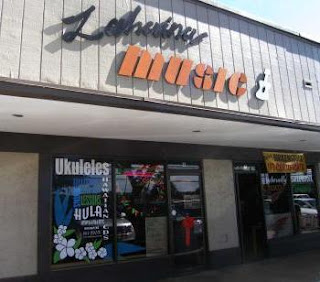Aloha!
My friends know that I love Japanese guitars but one brand has always eluded me: Teisco. I have hit countless secondhand stores in Japan and have never seen one of these guitars in the flesh. I know they have to be out there somewhere, and I always see them on eBay in the US.
Teisco was a Japanese company that built guitars from 1948 to 1969, and Teisco is an acronym for Tokyo Electric Instrument and Sound Company. They built amplifiers and keyboards and distributed drum sets (made by others), but I am most interested in guitars and basses, so this is what you get. They sold instruments domestically and also distributed gobs of them to the United States and Great Britain. The company was sold to Kawai in 1967, and they discontinued selling guitars under the Teisco brand name in 1969 (for export) and 1977 (for Japan).

The company was the brainchild of a guitarist, Atswo Kaneko, and it went through various company names before Teisco was chosen in 1964. So most of the Teisco badged guitars you see were built between 1964 and 1969, or 1964 and 1977 for Japanese market instruments. These guitars were often sold at department stores (such as Sears), and were also imported under other names including: Arbiter, Audition, Beltone, Duke, Heit Deluxe, Jedson, Kay, Kent, Kimberly, Kingston, Lyle, Norma, Silvertone, Sonatone, Top Twenty, Tulio and World Teisco. But everybody and their brother want s a Teisco Del Rey. By the way Teisco Del Rey was the name found on guitars imported to the US by Chicago’s Jack Westheimer.

From 1948 to 1964 the company built Spanish guitars and played it safe on the electric side by copying guitar and bass designs from Gibson, Fender, Hagstrom and EKO. But in the 1960’s they started building unique instruments with bizarre and modernistic features. We started to see bitchin’ hook-shaped headstocks with distinctive 4+2 tuner layouts (or 3+1 on basses), as well as sexy sculpted body profiles. They experimented with pickguard designs, and a lot of these guitars are pieces of art.
Teisco also came up with over the top electronics for these guitars too. There were guitars with up to four pickups, with either humbuckers or single coils, and oodles of volume and tone knobs. They also had a penchant for adding switches like they were going out of style, and usually these change the phase of the pickups or turn them ON and OFF.
So these guitars looked cool and had tons of sounds that you could get out of them. They also usually goofy bridges and tailpieces that changed their sound even further. As time went on, these guitars gained a cult-like status with bands that used them as they were a good substitute for a Jaguar or Jazzmaster, and were a lot cheaper too. These guitars were used by Jackson Browne, Hound Dog Taylor, Jesus and the Mary Chain, and the Smashing Pumpkins.
Many of these guitars were beginner model guitars and were not really quality instruments or very well made, but there were higher grades of guitars too, and some of them are really quite valuable now. Some of the more sought after models include:
∙ The Teisco SD-4L with four pickups, six switches and bizarre barrel type volume and tone knobs. and eight switches. These guitars came with a tremolo and I have seen some of them covered in vinyl. This is the model that Hound Dog Taylor used.
∙ The Teisco Del Rey Spectrum 5 with 3 split-coil pickups, colored pickup selector switches and mono / stereo outputs. These were quality guitars with a walnut bodies and lacquer finishes. This is the top of the pyramid for me, and I really want one of these.
∙ The Teisco Del Ray May Queen with simpler electronics that include two pickups, volume and tone knobs and a pickup selector. What makes this guitar desirable is that it is semi-hollow, and it has a goofy oval shape that some interpret as an artist’s palette.
∙ The Teisco TRG-1 with its own onboard amplifier and speaker. These were also sold as "Kay" and "Silvertone" guitars through department stores.
These are all fun and unique guitars and I hope you have the chance to see an play one some time. If you are looking to purchase one, keep in mind that they were not super-expensive guitars to start with, so the hardware is cheap and it may have been broken and replaced with non-standard parts. Also if you find a super minty specimen it might be a re-issue, as Kawai re-issued these for awhile in the early 1990s.
Mahalo!













































